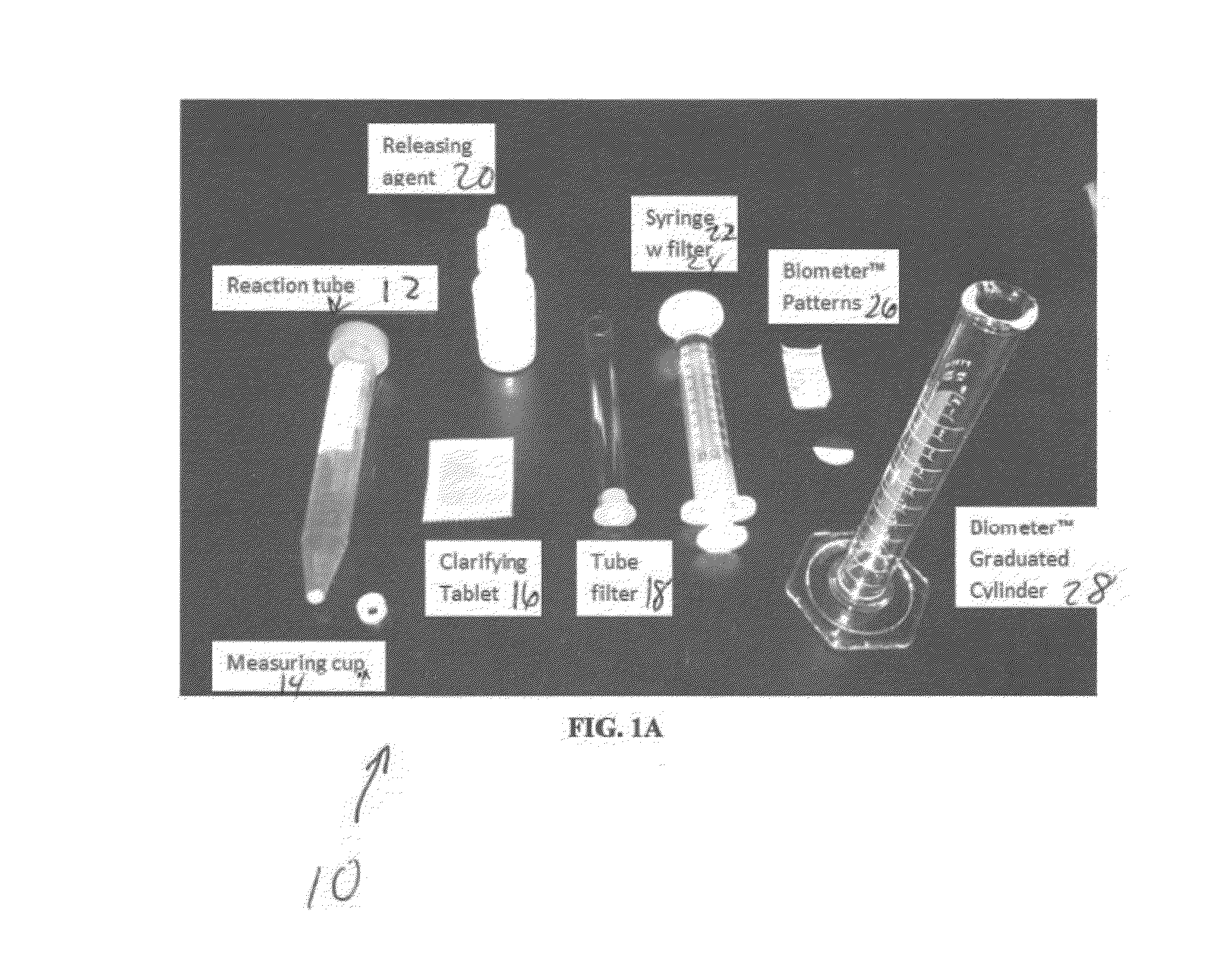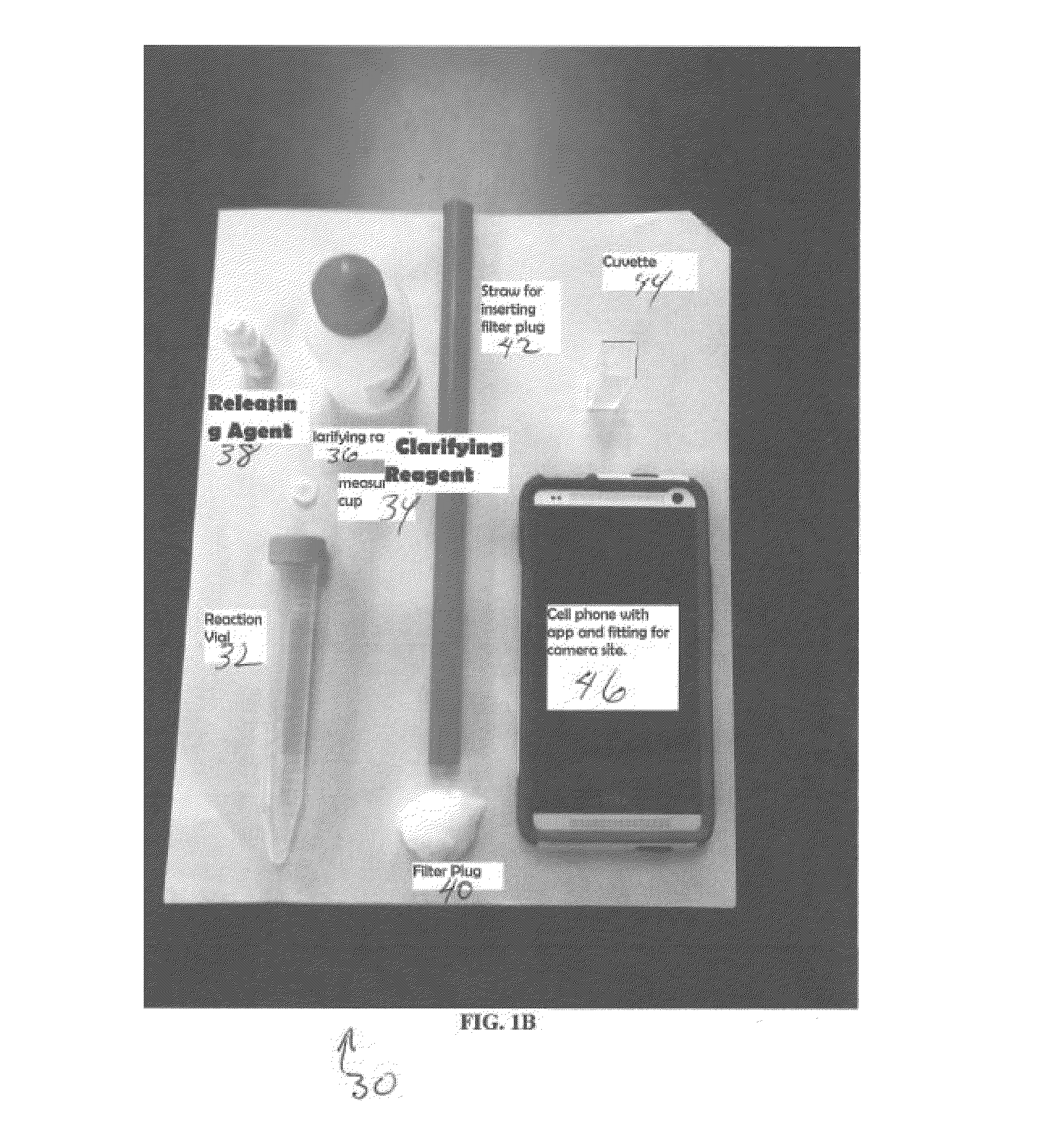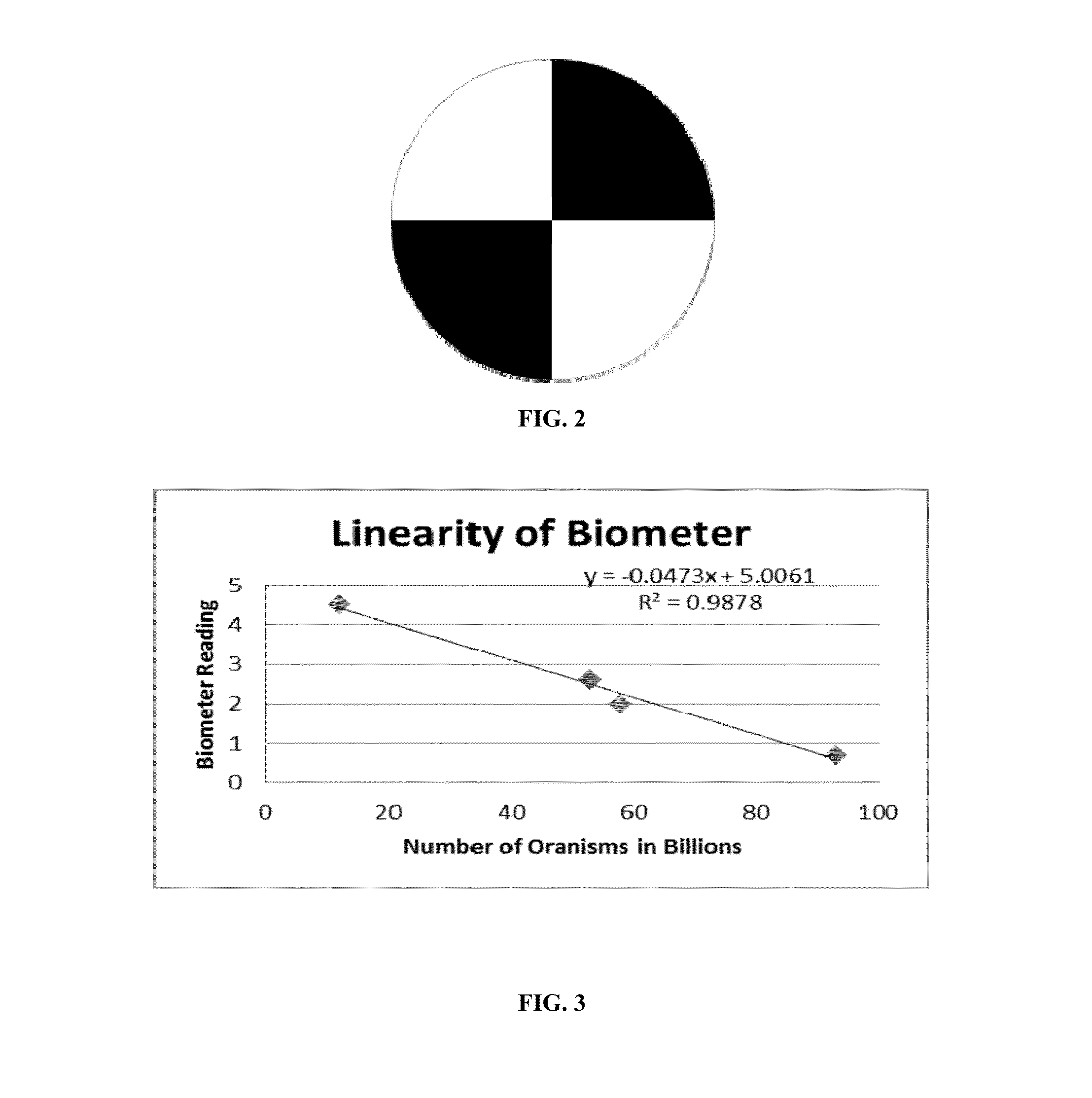Methods and compositions for estimating soil microbial load
a soil microbial load and composition technology, applied in the direction of biomass after-treatment, suspension and porous material analysis, specific use bioreactors/fermenters, etc., can solve the problems of insufficient testing and standardization of soil microbial content, inability to accurately determine the microbial content of soil, and difficult to measure microbial biomass or other soil analytes, etc., to achieve time-effective and cost-effective
- Summary
- Abstract
- Description
- Claims
- Application Information
AI Technical Summary
Benefits of technology
Problems solved by technology
Method used
Image
Examples
example 1
Methods for Measurement of Bacteria in Soil
[0109]Methods to assess turbidity, reflectance and / or transmittance without need for large laboratory equipment, such as a spectrophotometer, have been established. The methods remove soil particles and pigments which contribute to turbidity, reflectance and / or transmittance. The methods also overcome problems associated with microbes that are firmly attached to the soil particles and do not go into solution. The preparation steps covered in this patent can also be used to facilitate the measurement of soil analytes and biomass in the laboratory and incorporated in this patent.
[0110]Methods and Materials
[0111]The microbial content of soil was estimated using the equipment and methods of the SOIL BIOMETER™ test kit (FIG. 1), according to the following instructions:
1. Pack the measuring cup with a known amount of coarse filtered soil (see Table 2) or for compost extract / tea measure out 1 mL using the disposable pipettes. Alternatively, 2 capf...
example 2
Methods for Measurement of Bacteria in Soil
[0114]Methods and Materials
1. Pack the punch with plunger 0.33 cc of coarse filtered soil (see Table 2) or for compost extract / tea measure out 1-2 mL using the disposable pipettes.
2. Add to reaction vial that contains clarifying and releasing agent.
3. Insert vibrating wand and turn on for 15 seconds.
4. Remove cap from tube and insert the tube filter onto the reaction vial, then slowly press in down into the tube using the straw.
5. Pour the filtrate into the SOIL BIOMETER™ turbidity tube over the SOIL BIOMETER™ pattern.
6. Look into the SOIL BIOMETER™ turbidity tube and using a disposable pipette remove fluid until the black / white divide becomes visible. It may be necessary to use the pipette to remove some of the foam from the surface. Estimate the number of microbes / ml less than 10 μm in size according to Table 1.
[0115]Results:
[0116]20 replicates gave an average Biometer reading 2.5 and CV of 3.1%.
[0117]Particulates affecting turbidly are o...
example 3
Effects of CAPSIL® on Bacterial Count
[0119]Test 4 method was performed with and without CAPSIL®. Biometer reading without CAPSIL® was 3.5, with CAPSIL® 2.5. Identical results were obtained with Tween 20 as solubilizer at a 0.1% concentration. Microscopic analysis confirmed the increased release.
[0120]Before counting or culturing soil bacteria, they must be separated from soil particles by vigorous shaking or sonication and / or detergent. Releasing microbes from soil is accomplished by vigorous shaking and the use of a mild detergent agent such as CAPSIL®. A requirement of the releasing agent is that it only causes minimal foaming and does not interfere with turbidity, reflectance and / or transmittance and filtration. It should also be stable in a packaged and ready to use form. Release by sonication is not easily adaptable to field conditions and shaking alone requires a long time until a stable number is released. One should avoid solubilizing agents that can damage microbial membran...
PUM
 Login to View More
Login to View More Abstract
Description
Claims
Application Information
 Login to View More
Login to View More - R&D
- Intellectual Property
- Life Sciences
- Materials
- Tech Scout
- Unparalleled Data Quality
- Higher Quality Content
- 60% Fewer Hallucinations
Browse by: Latest US Patents, China's latest patents, Technical Efficacy Thesaurus, Application Domain, Technology Topic, Popular Technical Reports.
© 2025 PatSnap. All rights reserved.Legal|Privacy policy|Modern Slavery Act Transparency Statement|Sitemap|About US| Contact US: help@patsnap.com



